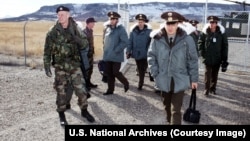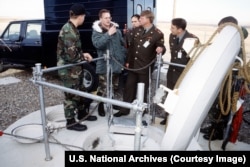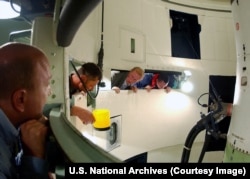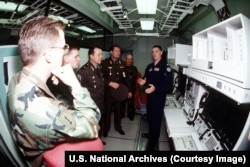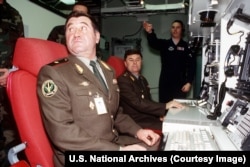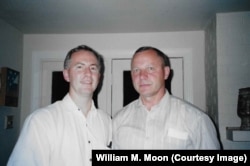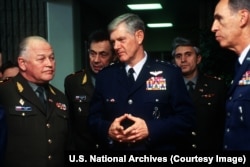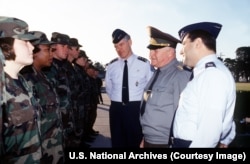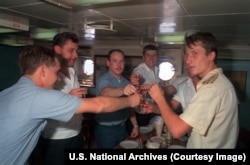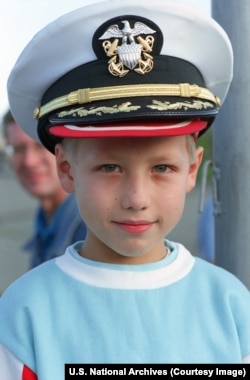The above photo, made in October 1996, is one of a handful held in the U.S. National Archives capturing the brief thaw in relations between Moscow and Washington that began as the U.S.S.R. neared collapse, and ended with the rise of Vladimir Putin.
In December 1991, Boris Yeltsin, the president of a soon-to-be-independent Russia, detailed to U.S. Secretary of State James Baker exactly how the Kremlin's nuclear strike system would be activated for an attack.
Yeltsin's surprising gesture of openness was followed by a series of concessions by both sides that would lead to thousands of nuclear warheads being removed from each country's arsenals.
Russia and the United States agreed to significantly reduce the tens of thousands of nuclear weapons each country possessed, and to "de-target" others. Mutual visits to Russian and U.S. nuclear weapons facilities were planned as a way to maintain trust as the historic nuclear drawdown began.
William M. Moon was the nuclear security program manager for Cooperative Threat Reduction programs in several post-Soviet countries from 1992 to 2014. He experienced the occasionally frosty thaw of the 1990s firsthand.
Moon was responsible for arranging two visits by Russian generals to U.S. nuclear-warhead storage facilities. He told RFE/RL that on one of those visits, the Russian delegation members were each given personalized access passes but, inexplicably, the visitors swapped their passes among themselves. The move "generated a security violation that caused the Marine guards to draw their weapons to surround the delegation."
The commander of the base was "furious," Moon said of the ID card debacle. "It became impossible for those of us in the Cooperative Threat Reduction program to invite any Russian delegations to visit additional U.S. facilities."
Remembering his own visits to nuclear-warhead storage facilities in Russia, Moon told RFE/RL the missions included, "riding in vans for three or more hours with the windows blacked out." He and his team were also restricted from carrying anything metallic. "I even had my boots taken away from me because they had metal protective toes in them."
Along with military visits to missile storage and launch facilities as part of treaty monitoring, the 1990s saw several goodwill exchanges by Russian and U.S. militaries.
By the mid-1990s, relations between Moscow and Washington were beginning to sour over NATO's expansion eastward, and the Western alliance's increasing involvement in the Bosnian War. Andrei Kozyrev, Russia's foreign minister under Yeltsin, described his U.S. counterparts as "little Western thugs."
Moon says the meetings between U.S. and Russian militaries that began in the 1990s were suspended by Washington following Russia's annexation of Ukraine in 2014. The arms-treaty-compliance inspections were halted at the onset of the COVID pandemic, and then, Moon said, "Russia refused to resume inspections."
Moon says looking back at the hopefulness of the 1990s, “it is deeply disturbing to me that after working so closely with the Russian Ministry of Defense for almost 20 years, including over 75 visits to Russia, that the Russians have cut off all communications and chosen to launch an unprovoked genocidal war against Ukraine.”
Moon added, "I had hoped that my work would have resulted in further reductions in nuclear tension, but Russia has chosen aggression over cooperation."




